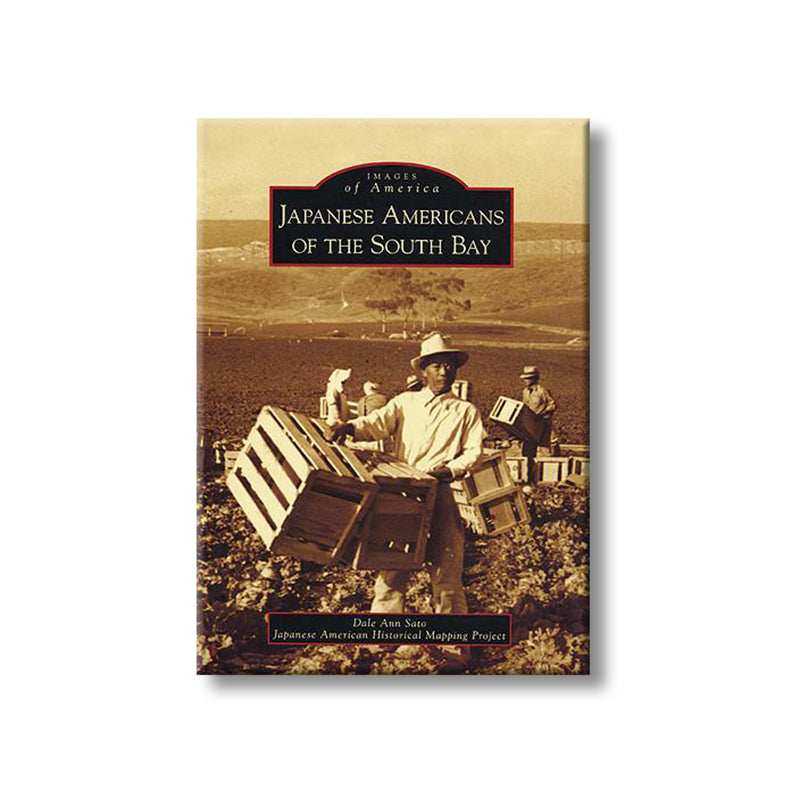Japanese Americans of the South Bay
SKU:150610
Couldn't load pickup availability
Product Description
Product Description
By Dale Ann Sato, Japanese American Historical Mapping Project.
Early-20th-century settlers in Los Angeles County's South Bay region found fallow rancho land worthy of cultivation, as well as roads and railways to move produce to markets. First-generation Japanese Issei immigrants became pioneering strawberry, vegetable, and flower growers and cannery fishermen. Their fields blanketed the landscape between oil derricks and along sloughs and the dry-farmed coastline. Families pooled resources and built Japanese language schools for their American-born Nisei children that doubled as meeting halls. Small mom-and-pop businesses and services sprang up in Gardena and elsewhere, catering to Japanese neighborhoods. The evacuation, detention, and incarceration of Japanese Americans during World War II devastated their sense of belonging and livelihoods that had taken 40 years to establish. Today South Bay is home to multi-generational Japanese and Asian Americans who continue that legacy of industry, beautification, and diversity.
These vintage photographs chronicle Japanese American lives from the early 1900s through the 1950s, with a brief tribute to the 1988 landmark presidential apology and reparations that addressed gross injustices. Images were gathered from families and special collections by the Japanese American Historical Mapping Project (JAHMP), whose mission is to document forgotten family and land history. Dale Ann Sato, JAHMP’s founder, was born and raised in the South Bay and has been a college educator and oral historian.
Paper: 128 pp.
Return Policy
Return Policy
UNLESS FINAL SALE:
Full refunds (less shipping and handling) will be issued provided that the merchandise is in resalable condition upon receipt and the merchandise is returned within 30 days of the delivery date. Before returning any merchandise for a refund or exchange, please email us at museumstore@janm.org. We will provide you with information necessary for the return authorization.
JANM Store Return Policy
Shipping Policy
Shipping Policy
STANDARD DELIVERY: Standard deliveries within the continental U.S. are sent via UPS Ground or USPS Priority Mail from Los Angeles, California. Delivery time varies depending on location and product availability but generally takes from 3-10 business days. You will be advised of a delay in shipping that exceeds 30 days.
JANM Store Shipping Policy
Store Pickup
Store Pickup
The JANM Store is now offering onsite pick-up for orders placed online. Just select “Pick Up in Store” at checkout. You will receive a notification email when your order is ready for pick-up.
Pick-up is by appointment only! Please reply with the date and approximate time you will be picking up your order.
We ask that you pick up your order no later than 10 days after it is ready. If your reply is not received within one week, or you cannot pick up your order within 10 days, your order may be canceled.
We DO NOT guarantee same-day pick-up. Orders received by 3:00 p.m. on a business day will usually be available for pick up by the next available pick-up date. When you arrive at the entrance to the Museum, please call the Store at 888.769.5559, and one of our Sales Associates will bring out your order.
Please allow an extra day for pick-ups on Thanksgiving weekend and the week before Christmas.
We require that you make an appointment for pick up. Appointment times are Tuesday-Saturday 12 p.m.-5 p.m.
Days and hours available for a pick up (subject to change without prior notice).
We are closed on Sundays and Mondays.
Members
Members
Membership in JANM provides numerous benefits (*including 10% off eligible JANM Store purchases!), and supports our mission to promote understanding and appreciation of America’s ethnic and cultural diversity by sharing the experiences of Japanese Americans. Become a new Member, renew your Membership, or share JANM with a friend or loved one by giving a Gift Membership.
Add a membership to your cart and you'll immediately receive 10% off all qualifying items on your order.
Join Today






